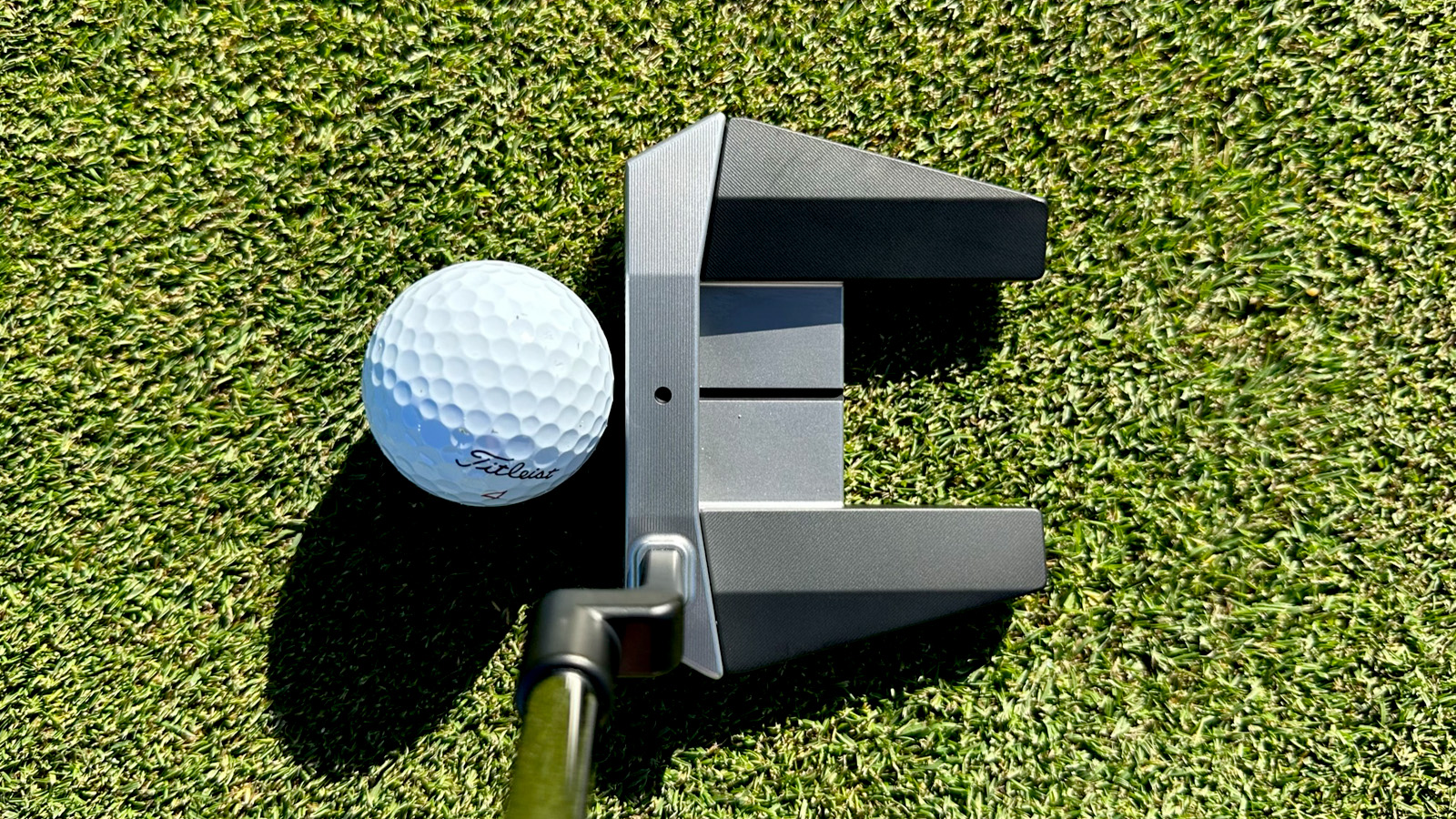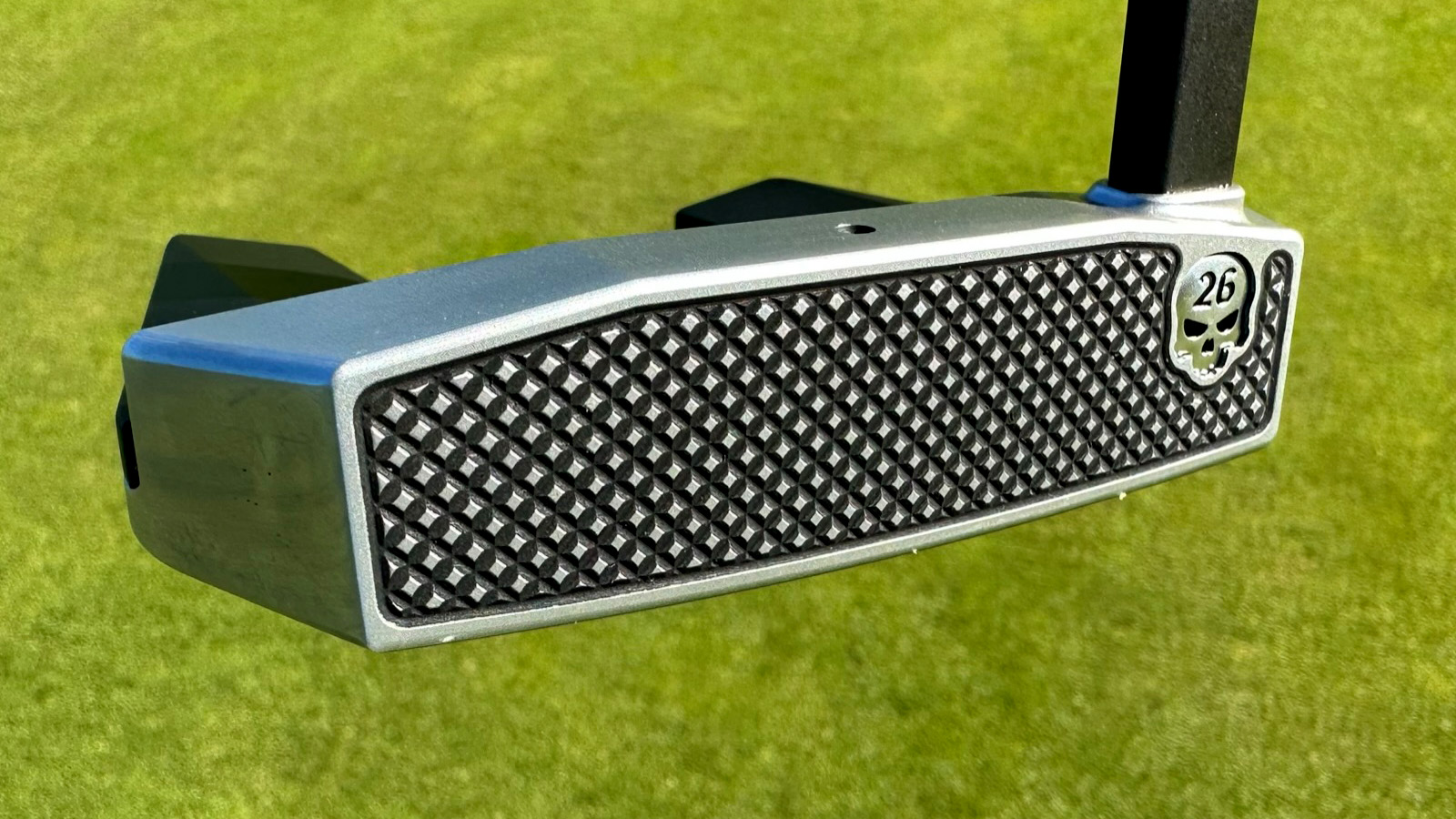PXG Battle Ready II Bat Attack Putter Review
Sam De’Ath tests one of the latest PXG putter designs on the course to see if the technological updates lead to gains on the green

A competent mallet putter option that has had a whole host of technology injected into it (literally). The milled pyramid face feels firmer than we initially expected, although it did produce a good roll on the ball. There are plenty of alignment features that certainly helped when putting from from short range.
-
+
Premium looks with a contrasting black and platinum colors
-
+
Produced a good roll, particularly from inside ten feet
-
+
Headcover is top end in both functionality and looks
-
-
Feels overly firm when not struck out the middle
Why you can trust Golf Monthly

PXG has launched its Battle Ready II series off the back of the original Battle Ready series which were definitely among the best PXG clubs. PXG has made some refinements to elevate both the performance and aesthetics of the new nine models available - one of the popular models returning to the lineup is the Bat Attack putter. This double fang shape possesses contrasting weighted heel-toe wings alongside a sight line and dot for easy alignment. This shape is designed with the high MOI of a mallet, while still receiving the feedback of a blade to inspire confidence on the green.
“From consistency across the face to the feel at impact, these putters deliver in spades – and the new platinum finish is absolutely gorgeous.” The words of PXG Founder and CEO - Bob Parsons. He’s not wrong, this putter really does look great, both in the bag and behind the ball. The combination of the jet black wings and platinum body give this putter a sleek and modern look, while the contrasting colors also help with alignment. Thanks to this I noticed I was scaring the hole a lot more often from inside 15ft and felt extremely confident on those nervy three footers.

The PXG Bat Attack Battle Ready II Putter at address
The Bat Attack putter along with the rest of the Battle Ready II range features a Pyramid Face Pattern. I noticed this muted the ball as intended when struck purely from the middle of the face, although when missed slightly, the face felt very solid and produced a ‘tinny’ sound that I was less of a fan of. So what makes this putter feel the way it does off the face? Well the same technology that was used in the 0311 irons has been applied. This putter features a hollow body construction which allows for mass to be positioned towards the perimeter of the putter, therefore producing up to 10 per cent higher MOI than the previous respective model which featured more of a solid body construction. This also allows for what PXG is calling ‘the thinnest face in putters’ which measures just 0.055” thick, aimed at improving the responsiveness of the face, although I can’t say with any certainty this is something I noticed in testing.

The pyramid face on the PXG Bat Attack Battle Ready II Putter
I can say with confidence, though, that the consistency of both speed and accuracy on long range putts validated this shift in design and I gained in confidence as my testing went on. This putter also features S COR Technology which is a lightweight polymer injected into the body of the putter behind the face to help dampen vibrations and provide a superior sound and feel. While I will say this was noticeable when putting from short range, longer range putts that required a little more of a hit, still felt very harsh off the face compared to some of the best putters we have tested this year.
Overall I would say that this putter is a good option for those seeking a firmer feeling putter or a larger mallet style head to help inspire some confidence on the greens. There is the additional option of purchasing the Bat Attack putter with a multi-material M16 shaft, similar to that found in the Odyssey Stroke-Lab putters, which for an upcharge of £102 is said to also improve consistency of stroke and accuracy.

PXG Battle Ready II Headcover
While this isn’t relevant to the performance of the putter, I do think it’s important to recognize the headcovers all the Battle Ready II putters are equipped with. Not only are they made of a waterproof leather, they have a magnetic button and certainly look cool when your putter is rested in your bag. For £349, you get a lot of putter for your money and the stock grip is also comfortable and appropriately sized and shaped.
Subscribe to the Golf Monthly newsletter to stay up to date with all the latest tour news, equipment news, reviews, head-to-heads and buyer’s guides from our team of experienced experts.

Sam has worked in the golf industry for 14 years, offering advice on equipment to all levels of golfers. Sam heads up any content around fairway woods, hybrids, wedges, putters, golf balls and Tour gear.
Sam graduated from Webber International University in 2017 with a BSc Marketing Management degree while playing collegiate golf. His experience of playing professionally on both the EuroPro Tour and Clutch Pro Tour, alongside his golf retail history, means Sam has extensive knowledge of golf equipment and what works for different types of golfers.